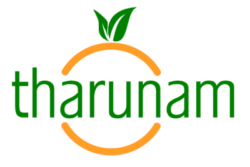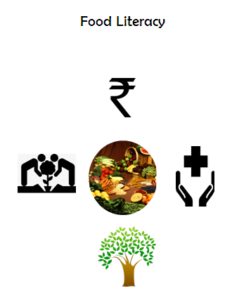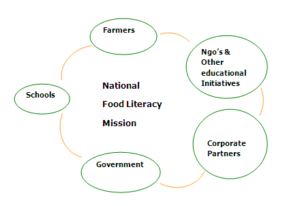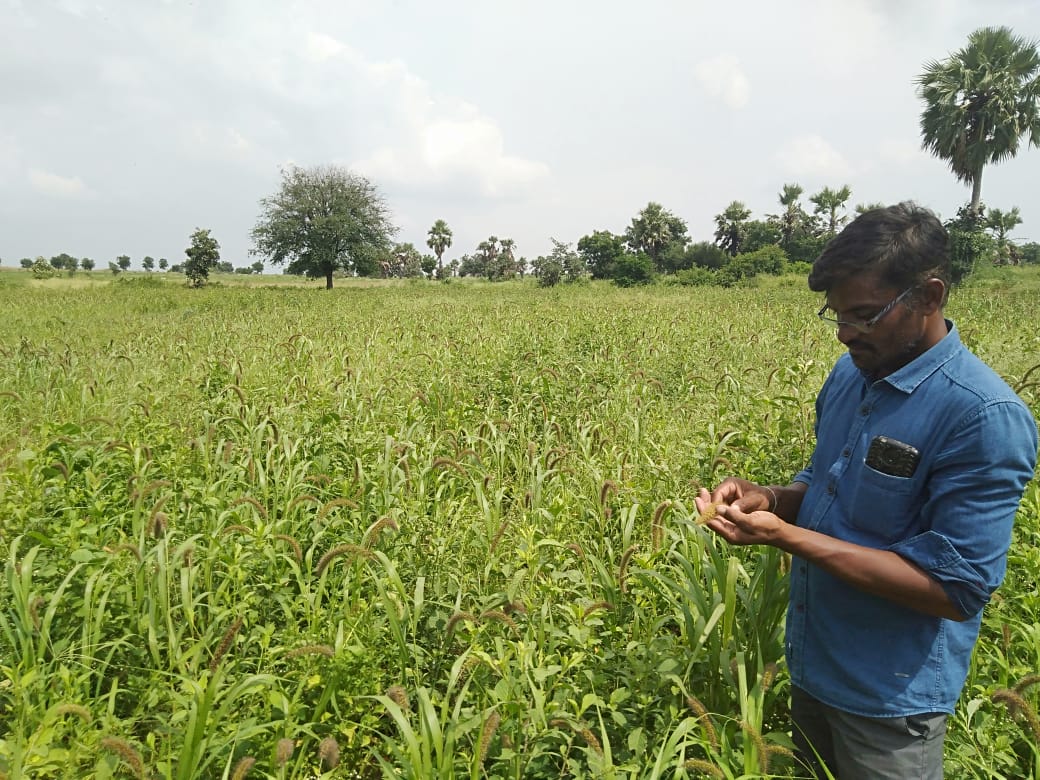According to UN’s report, India’s urban population is going to reach 900 Million by 2050 and it will be the clear sign of massive drop out in farming sector and that is going to add urban areas.
The growing population, declining food production and farm dropouts are pressing the need of an effective Crisis management plan to tackle ecological challenges and agrarian distress before they will turn into massive food crisis or migration or unemployment issues in India.
In order to address these problems, tharunam is working on a mission ‘to use food as a medium for social change and make it universally accessible and affordable’.
We have different level interventions to achieve our goals but started working with one project called ‘National Food Literacy Mission’.
National Food Literacy Mission:
National Food Literacy Mission has been initiated with the vision to empower at least every school in India to adopt Food Literacy skills are part of their schooling curriculum by 2030.
What is our understanding of Food Literacy?
Food literacy in the sense understanding the food what we are eating; and it is an ability to produce one’s own food while understanding its impacts on one’s own health, environment and sustainable economy.
Why Food Literacy training curriculum in schools?
Food Literacy skill as a Vocational Skill: Like digital literacy skill, food literacy is also considering as a global skill. So, through our training program, participants will gain the knowledge of sustainable food production techniques and environmental education which
are some of the essential skills to acquire in 21st century.
As a Crisis Management plan:
As a Nation, our population is going to reach 1.5 Billion by mid 21st century is pressing the need of backup plan or crisis management plan to tackle food crisis and ecological challenges. Empowering Individuals about sustainable food production techniques and nutritious food choices will be definitely served as a Crisis Management Plan for any nation to achieve zero hunger and climate action.
Sustainable Development Goal No.12:
The Food Literacy can be the catalyst to achieve several Sustainable development goals. In particularly, SDG Goal number 12, Responsible consumption and Production is achieved by accomplishing Food Literacy Mission.
To Address Nutritional Problems:
The most common nutritional problems of India are Obesity, Malnutrition and Anemia. We can address all of these problems by
empowering individuals about healthy food choices either become part of healthy food production or consumption or both.
To address agricultural crisis & Climate Change issues:
The concept of Food Literacy is very simple; let the consumer to eat and farmer to produce healthy food. Imagine, if we start eating a healthy food then there will be a scope for natural farming practices. Natural farming practices are cost effective, climate resilient and healthy living for both farmers and customers. So, empowering people about organic food choices will impact overall Agro-ecological ecosystems in the world.
Our stakeholders are
We intend to make this project successful through multi stakeholder approach by bringing stakeholders like farmers, schools, government and corporate partners together to participate in dialogue, decision making, and implementation of the solutions to achieve our goals.
Different Phases of National Food Literacy Mission are
Phase 1: Spreading the idea of Food Literacy in Schools
Phase 2: Establishing the Food Literacy Centers
Phase 3: Policy level advocacy
Copyright © tharunam



